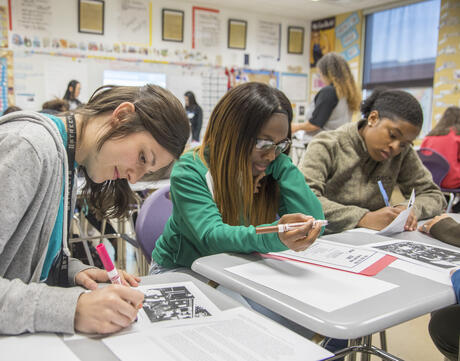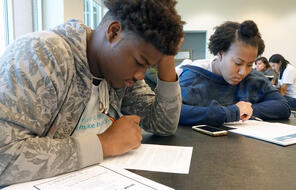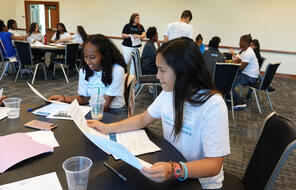
Step 2: Introducing Evidence Logs
At a Glance
Language
English — USSubject
- History
- Social Studies
Grade
9–12Duration
One 50-min class period- The Holocaust
- Democracy & Civic Engagement
- Genocide
- Antisemitism
Overview
About This Assessment
After students have completed Lesson 7: Genocide under the Cover of War, it is an appropriate time to revisit their initial position on the assessment prompt that they drafted in Assessments Step 1. At that point, students reflected on the prompt but did not connect it to any of the specific historical events they are studying in this course. Now that students have learned about the Armenian Genocide, they will reflect on the prompt a second time by adding this historical lens. It is important that students keep the materials for the assessment (journal reflections, evidence logs, handouts) in a safe place, because they will refer back to them throughout the course in preparation for their final writing assessment and/or Choosing to Participate (CTP) Toolbox project.
Procedure
Activities
Materials and Downloads
Quick Downloads
Download the Files
Download allGet Files Via Google
Step 2: Introducing Evidence Logs
Genocide under the Cover of War
Nationalism and the Aftermath of World War I
Unlimited Access to Learning. More Added Every Month.
Facing History & Ourselves is designed for educators who want to help students explore identity, think critically, grow emotionally, act ethically, and participate in civic life. It’s hard work, so we’ve developed some go-to professional learning opportunities to help you along the way.
Exploring ELA Text Selection with Julia Torres
On-Demand

Working for Justice, Equity and Civic Agency in Our Schools: A Conversation with Clint Smith
On-Demand

Centering Student Voices to Build Community and Agency
On-Demand





